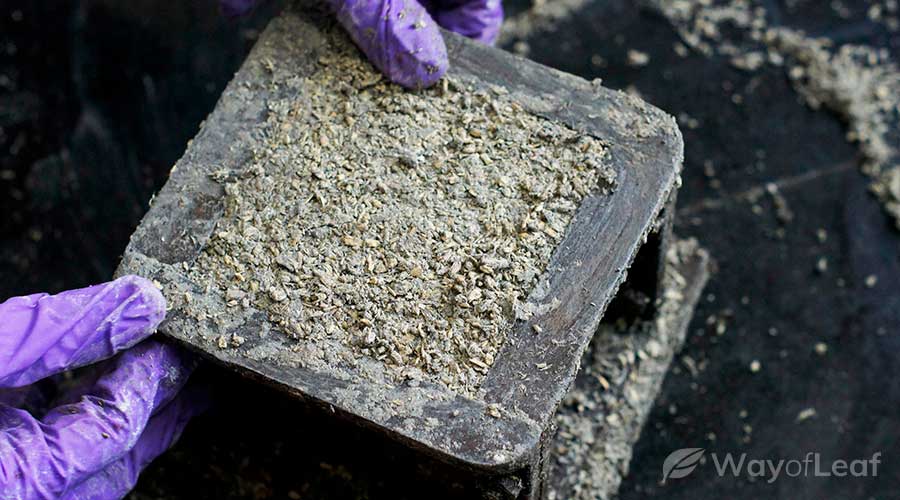Proponents of hempcrete suggest that it is an excellent building material. Indeed, there is a suggestion that construction companies can use it instead of concrete. The dream is to create millions of hempcrete homes.
Certainly, it has a huge array of advantages. Hempcrete is:
- An excellent insulator
- Extremely lightweight
- Capable of handling a greater degree of movement than concrete
- Exceptionally durable, it can last hundreds of years
- Non-toxic and good for the environment. It reduces the carbon footprint associated with construction drastically.
- Highly resistant to mold
However, at present, there are relatively few examples of companies using hempcrete in building projects. The number of properties made from hemp in the U.S are in the dozens – or perhaps hundreds at best.
This begs the question: If hempcrete is so useful, why is it still a relatively unknown quantity in construction?
Issues over legality is one of the primary reasons. Industrial hemp only became federally legal to grow in the United States in December 2018. Almost every state has already submitted its hemp program to the United States Department of Agriculture (USDA).
The suggestion is that the hempcrete industry will take off in America in the next decade. However, it still isn’t regarded as a viable replacement for concrete. Despite its many strengths, hempcrete does have several downsides. We explore them in this article.
1 – Lack of Knowledge
As it is a relatively new material, there isn’t much research on it as a building material. In the United States, 80 years of hemp prohibition only ended recently.
Indeed, most companies that now use hempcrete have only had access to it for a couple of years. A lot of old knowledge about creating a hemp building was lost, and construction companies must relearn it. Therefore, it is a challenge to find a company in your area that specializes in hempcrete use.

There are also no standardized hemp manufacturing processes. This means that hempcrete is currently an unstandardized product technically safe for non-structural purposes only. At present, timber frame structure is the only method of construction using hempcrete that is scientifically validated.
Hopefully, we will clear up many unanswered questions in the next few years.
2 – Limited Uses
Construction experts assert that hempcrete has a limited range of uses. It has a high capacity for handling moisture. This has some advantages, but it also means that companies can’t feasibly use it for marine or underground works.
Also, it is likely unsuitable for use in certain climates. For instance, extremely warm climates with a high degree of moisture could increase the heat inside a hempcrete building. Therefore, it is unsuitable for residents of places such as coastal India or the south of France.
Hempcrete also takes up to eight weeks to dry and is affected by weather change.
Perhaps the main drawback is the low rate of compressive strength. At a maximum, hempcrete’s compressive strength is 3.5 megapascals (MPa). In contrast, the lowest compressive strength of concrete is around 17 MPa. As such, construction firms can’t use hempcrete in heavy load bearing works.
3 – More Expensive Than Concrete
The fact it is a relatively new material in the modern era means higher costs. This could change as the material is used more frequently. However, it is unquestionably more costly than concrete at present. Best estimates suggest that you can expect to pay at least triple the price for hempcrete.
You will find that the upfront costs associated with hempcrete are uncomfortably high. First and foremost, it isn’t as easy to find hempcrete as you think. We explain the reasons in the next section. Finding experts in hempcrete construction is tricky and will likely cost more than companies that use concrete.

On the plus side, you will make money back in the form of energy savings. You could also save money on homeowner’s insurance. A hemp house is fireproof and stands up well to natural disasters such as earthquakes.
4 – It Isn’t Necessarily Easy to Find
For hemp farmers, it isn’t worth their while growing the crop for hempcrete. Ultimately, the price of the material will fall in the future. That means farmers will receive even less than they do now for hemp. At present, they probably don’t receive more than $35 per acre. This profit is before accounting for costs after planting the seeds.
The hemp is decorticated, separated, and shipped before it is used in hempcrete. These added costs play havoc with a farmer’s bottom line. There is no need to go down this path when the CBD market is so lucrative. Farmers that grow hemp for cannabidiol products will receive a far better price for their crops. They also endure fewer added costs.
Although it is legal to grow hemp in the United States, growing programs in many states remain rather small. Again, most of the crops are for the CBD market. There are also dozens of countries around the world that still don’t permit hemp growth or use.
All of the above combine to limit access to hempcrete.
5 – It Reduces Square Footage of Living Space
One of hempcrete’s strengths is also a possible weakness. When used in construction, hempcrete walls are thicker than other walls. As a result, homeowners benefit from a greater degree of insulation. This is excellent news for those looking to decrease their energy bills. With better insulation, you can limit the use of heating during colder months.
As we have mentioned earlier, hempcrete is unsuitable for load-bearing walls. This is down to its lengthy curing time. Some companies have created hempcrete bricks to try and solve this issue. These bricks take less time to cure so that builders can stack them like cinder blocks.
However, these bricks are noticeably thicker than their concrete counterpart. As a result, you will have less living space. This becomes an issue if you try to sell your home. In the United States, the average price of a new single-family home is $119.61 per square foot.
Final Thoughts on the Disadvantages of Hempcrete?
At present, one of the main downsides regarding hempcrete is a lack of knowledge about it. Once construction experts learn more about its usefulness as a building material, they can decide how best to use it.
Until then, it is important to understand hempcrete’s limitations but also focus on the positives.
It is potentially a fantastic way for the construction industry to lower its carbon footprint. Homeowners could benefit from lower long-term energy bills and enjoy better-insulated houses. It is also light, breathable, and isn’t as brittle as concrete.
![How to Know If You’re Allergic to Weed [Definitive Guide]](https://wayofleaf.com/wp-content/uploads/2017/04/marijuana-alergies-640x225.jpg)



![What Is Butane Hash Oil? [BHO Definition]](https://wayofleaf.com/wp-content/uploads/2019/04/mj_what-is-butane-hash-oil_1920-640x225.jpg)


![Where Does Cannabis Originate From? [Facts and Myths]](https://wayofleaf.com/wp-content/uploads/2018/05/wol-banner-where-does-cannabis-originate-from-640x225.jpg)

![CBD Oil Third Party Quality Testing [Essentials]](https://wayofleaf.com/wp-content/uploads/2019/03/wol_1920x450-61-640x225.jpg)


